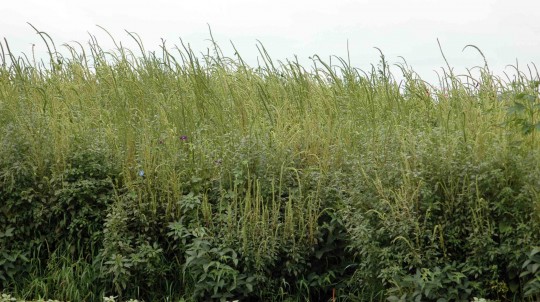Remain Vigilant for Palmer amaranth
Palmer amaranth (Amaranthus palmeri) has garnered much attention recently in both academic discussions and popular press releases, and with good reason. Among the weedy species of Amaranthus, Palmer amaranth has the fastest growth rate and is the most competitive with the crops common to Midwest agronomic cropping systems. Soybean yield losses approaching 80% and corn yield losses exceeding 90% have been reported in the peer-reviewed scientific literature.
While most concern focuses on Palmer amaranth in agronomic cropping systems, keep in mind that Palmer amaranth also can become established in noncrop areas. Palmer amaranth populations in noncrop environments obviously do not compete with agronomic crops, but these established plants can produce seeds that ultimately find their way into crop production fields.
We recently verified the identification of a Palmer amaranth population growing in an area enrolled in the Pollinator Habitat Initiative of the Conservation Reserve Program. The origin of this population remains unknown, but some speculate the forb seed mixture purchased to sow the pollinator area might have been contaminated with Palmer amaranth seed. Regardless of how and where a Palmer amaranth population becomes established, it remains critically important to take all appropriate steps to prevent established Palmer amaranth plants from producing seed. We strongly encourage all who have established pollinator habitats with a purchased forb seed mixture to scout these areas as soon as possible. If Palmer amaranth is identified, please take steps to remove these plants before viable seeds are produced on the female plants. Plants should be severed at or below the soil surface and carried out of the field. Severed plants can root at the stem if left on the soil surface, and plants can regenerate from stems severed above the soil surface.






